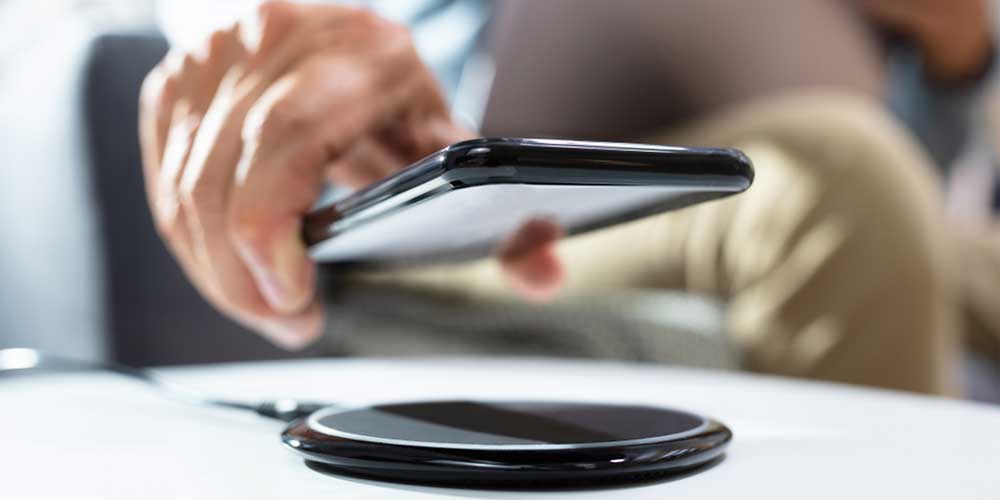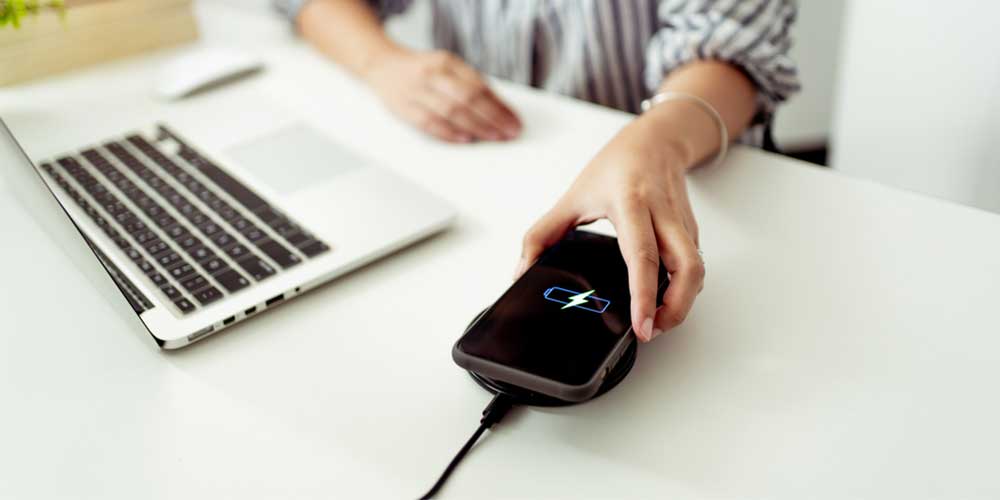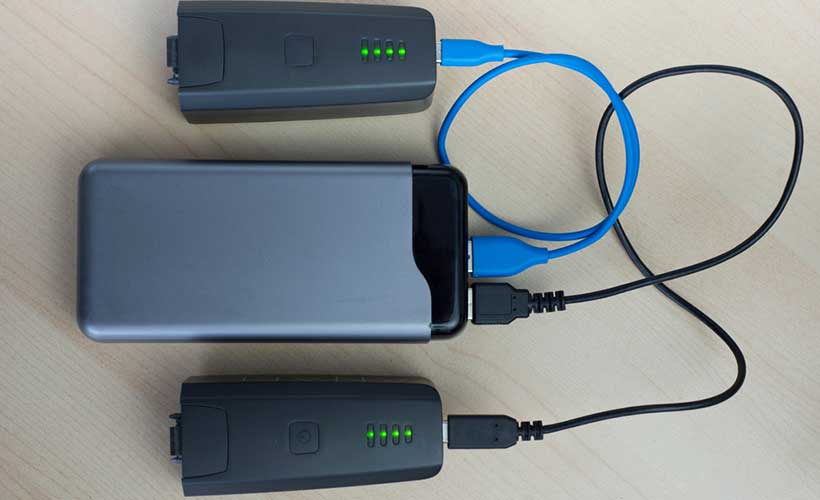CHARGER

A charger refers to any device that puts energy into a battery by sending an electric current through it. Some of the product that uses chargers are phones, laptops, and beard trimmers.
Types :
- Simple charger.
- Fast charger.
- Three-stage charger.
- Induction-powered charger.
- Intelligent charger.
- Motion-powered charger.
- Pulse charger.
- Solar charger.
- Timer-based charger.
Also Read: Mobile Software Training
Also Read: CCTV Installation Service
- Simple charger :
- A simple charger works based on supplying a constant DC or pulsed DC power source to a battery that is being charged. Simple AC-powered battery chargers contain much higher ripple current and ripple voltage than other kinds of battery chargers because they are inexpensively designed and built. A simple charger does not alter its output based on charging time or the charge on the battery.
- The simple charger means that it is not expensive, Basically a carefully designed simple charger, because it will take more time to charge a battery. Chargers are designed such a way that it uses a lower charging rate.
- This kind of simple charger makes the battery weak and may get damaged when the charge is put for a prolonged period. These charges differ based on the supply either a constant voltage or a constant current, to the battery.
- Simple AC-powered battery chargers usually have much higher ripple current and ripple voltage than other kinds of battery chargers because they are not designed expensively.
- Generally, when the ripple current is within a battery’s manufacturer recommended level, the ripple voltage will also be well within the recommended level. The maximum ripple current for a typical 12 V 100 Ah VRLA battery is 5 amps. As long as the ripple current is not excessive than the battery manufacturer recommended level, the expected life of a ripple-charged VRLA battery will be within 3% of the life of a constant DC-charged battery.
Also Read: Laptop Repair Training
- Fast charger :
- Fast chargers are designed with control circuitry to charge the battery faster without damaging any cells in the battery. This control circuitry is placed inside the battery or in the external charging unit.
- Most of the chargers are built with a cooling fan to maintain the safety level of the cells. Maximum fast chargers are capable of working as standard overnight charger if it is used with standard NiMH cells which do not have special control circuitry.
- Fast charging is simply increasing the number of watts (W) that are provided to a phone’s battery. A basic USB port sends 2.5W to the connected device, and faster chargers raise this amount. Current-generation devices have 15W power bricks.
Also Read: eMMC Repair Training Course
- Three-stage charger :
- 3-Stage Charging: Bulk Charge, Absorption Charge, and Maintenance Charge. 1 – Bulk Charging is the first stage in which the charger identifies the battery and its needs, then provides a high voltage/amperage charge.
- To increase charging time and provide continuous charging, an intelligent charger attempts to detect the state of charge and condition of the battery and applies a 3-stage charging scheme.
- When considering a sealed lead-acid traction battery at 25°C. The first stage is referred to as “bulk absorption”; the charging current will be kept high and stable and is reduced by the capacity of the charger.
- When the voltage on the battery reaches the voltage of 2.22 volts per cell, then the charger switches to the second stage, and the voltage is kept constant at a voltage of 2.40 volts per cell.
- The supplied current will decrease at the maintained voltage, and when the current reaches less (i.e) 0.005C, then the charger enters its third stage and the charger output will be kept constant at 2.25 volts per cell.
- At the third stage, the charging current is very small (i.e) 0.005C and at this voltage, the battery can be maintained at full charge.
- Induction-powered charger :

- Inductive battery chargers use electromagnetic induction to charge batteries. A charging station sends electromagnetic energy through an inductive coupling to an electrical device, that stores the energy in the batteries.
- There is no need for metal contacts between the charger and the battery. Inductive battery chargers are commonly used in electric toothbrushes and other devices used in bathrooms. Because there are no open electrical contacts, there is no risk of electrocution.
- Intelligent charger :

- A smart charger is defined as a charger that can respond to the condition of a battery, and modify its charging capacity accordingly.
- There is no need to confusing “smart charger” with a “smart battery”. A smart battery is defined as one consisting of some sort of electronic device or “chip” that can communicate with a smart charger regarding battery characteristics and conditions.
Some chargers are designed for smart charging :
- Smart batteries are designed with internal safety and protection or management circuitry.
- Dumb batteries, that do not have any internal protection and no safe electronic circuitry.
- The output current of a smart charger depends upon the battery’s state.
- An intelligent charger may monitor the battery’s voltage, temperature, or time charge to find the optimum charge current and to stop the charging.
For Ni-Cd and NiMH batteries, the voltage through the battery increases slowly during the charging process, till the battery is getting fully charged. Once fully charged then the voltage decreases, which shows in the intelligent charger that the battery is fully charged. Most often it is labeled as ΔV, “delta-V,” or sometimes “delta peak”, charger, indicates the change in voltage by monitoring.
The problem is, the magnitude of “delta-V” can be very small or become non-existent when high capacity rechargeable batteries are recharged. Sometimes, this may cause the intelligent battery charger to sense whether the batteries are fully charged or not and allows them to charge continuously.
Overcharging of the batteries may cause damages and affect the charging capacity of the battery. Most of the intelligent chargers use cut-off systems, that help in preventing overcharging in most cases.
A typical intelligent charger charges the battery faster up to 85% of its maximum capacity in less than an hour.
By measuring the battery temperature and the voltage as the parameter, based on that the intelligent chargers identify that the battery is 80% charged, then it will switch to trickle charge to maintain the status of the battery charge. Intelligent chargers are also called Smart Chargers or Negative Delta Voltage Chargers.
- Motion-powered charger :
- Motion-Powered charger stores the energy that is created by movement (i.e) walking, running, cycling, and similar actions. These devices are designed in such a way that they fit inside your pocket. This kinetic energy charger uses a patent-pending inductive technology that can generate power. It works with USB-powered electronics such as clips, sleeves, and armbands.
- Pulse charger :

- Chargers use pulse technology, where the battery is supplied with series of voltage or current pulses. The DC pulses have a strictly controlled rise time, pulse width, pulse repetition rate with frequency and amplitude. This type of technology work with any size, voltage, capacity, or chemistry of batteries, including automotive and valve-regulated batteries.
- With pulse charging, high voltages can be supplied without overheating the battery. In a Lead–acid battery, lead-sulfate crystals get to break down, thus helping long-lasting battery life.
Several kinds of pulse charging are patented. Others are open-source hardware.
Some chargers use pulses for checking the actual state of the battery, when the charger is first connected, during fast charging, it uses constant current charging, then uses pulse charging as a part of trickle charging to maintain the charge.
Some of the chargers use “negative pulse charging”, which is otherwise called “reflex charging” or “burp charging”. This type of charger uses both positive and negative current pulses. There is no particular evidence. Usage of negative pulse charging was said to be more effective when compared with normal pulse charging.
Pulse Charging same as the Constant Current method, the battery is injected with the pulsed current. It is given a specific time relaxation in each charging cycle. The internal electrolyte of the battery is neutralized using this method and enhances the life cycle.
- Solar charger :

- Solar chargers convert light energy into low voltage DC. They are generally portable, but can also be fixed mount. Fixed-mount solar chargers are also known as solar panels. Solar panels are often connected to the electrical grid via control and interface circuits, whereas portable solar chargers are used off-the-grid (i.e. cars, boats, or RVs).
- Although portable solar chargers obtain energy from the sun only, they still can (depending on the technology) be used in low light (i.e. cloudy) applications. Portable solar chargers are often used for trickle charging, although some solar chargers (depending on the wattage), can completely recharge batteries. Other devices may exist, which combine this with other sources of energy for added recharging efficacy.
9. Timer-based charger :
- The output of a timer charger is terminated after a pre-determined time. Timer chargers were the most common type for high-capacity Ni-Cd cells.
- Often a timer charger and set of batteries were designed with the charger time to suit those batteries. If lower-capacity batteries were charged then it will lead to overcharging, and if higher-capacity batteries were charged then they will be only partly charged.
- The drawback of Timer based chargers is that charging batteries that were not fully discharged, even if those batteries were of the correct capacity for the particular timed charger, may lead to over-charging.
There are three categories or types of charging: Trickle Charge, AC Charge, and DC Charge.
TRICKLE CHARGE :
- It is the slowest method of charging your EV at home, by using a standard 220V plug. It is recommended only in urgent cases, with certain precautions and consultation with electricity providers.
- A trickle charger is a low-current battery charger or having a trickle charging operating mode. It is generally used to charge small capacity batteries (i.e ) 2–30 Ah. These types of battery chargers are also used to maintain higher capacity batteries (> 30 Ah) that are found on cars, boats, RVs, and other similar vehicles.
- In larger applications, the current of the battery charger is sufficient only to provide maintenance or trickle current. Depend upon the technology of the trickle charger, it can be left connected to the battery indefinitely. Some battery chargers are being left connected to the battery without causing battery damage, as these chargers are smart and intelligent.
- Some of the battery types are not suitable for trickle charging. For example, major Li-ion batteries can’t be safely trickle charged, because it causes damage that leads to a fire or an explosion.
AC CHARGE :
Alternatively known as an AC/DC adapter, AC converter, or charger, an AC adapter is an external power supply used with devices that run on batteries or have no other power source. It then converts the power to DC that’s used by the computer, and a second cord that plugs into the computer.
DC CHARGE :
The fastest way to charge your EV at a public DC Fast charging station with power from 50kW and above. With this method, we can charge the battery from 20 to 80% approximately in 40 minutes. There are some ultra-fast charging stations are also available that can more power up to 150kW.
